Do you have a question about the Yongnuo YN565EX and is the answer not in the manual?
Supports AWL for Nikon and Canon systems, enabling TTL and M/Multi modes.
Features GN58@ ISO100, 105mm, supporting TTL/M/Multi modes.
Can be triggered by hot-shoe, flash command slave, optical S1, and S2 modes.
Covers focal length from 24 to 105mm, supporting full/half-frame cameras.
Includes FEC, FEB, Rear-curtain sync, FE lock, Modeling Light, and Canon menu access.
Achieves full output charge in 3 seconds, can be accelerated by external power.
Equipped with a socket for external power packs to meet high charging demands.
Limit maximum power usage to extend product service life.
Learn button functions by pressing them and observing the display.
Hold [ZOOM] button to enter specific off modes.
Long press [Fn] button to access advanced options.
Control speedlite via external speedlite function setting on Canon cameras.
Use directional buttons and [OK] to quickly adjust parameters.
Cycle through ETTL, M, and MULTI modes using the [MODE] button.
Part of the flash head assembly.
Extends flash coverage.
The main lighting component.
Connection for external power.
Port for synchronous connection.
Covers electrical contacts.
Receives wireless signals.
Enclosure for batteries.
Provides autofocus assistance.
Secures the speedlite to the camera.
Mounts the speedlite on the camera.
Electrical interface with the camera.
Output for sound prompts.
Instructions for correctly inserting batteries into the chamber.
Steps for mounting the speedlite onto the camera hot shoe.
Details on core button functions and their operations.
Instructions for turning the flash unit on and off.
Using the flash in ETTL automatic mode with camera settings.
Manual mode settings for flash output and zoom.
Using the flash for multiple rapid flashes in sequence.
Using the flash in slave modes for wireless triggering.
Controlling speedlite via camera menu on compatible models.
How to perform a test flash to check functionality.
Configuration options for power saving features.
Information on the speedlite's overheating protection mechanism.
Adjusting the flash beam angle for different focal lengths.
Explanation of sound prompts indicating working status.
How to configure master units for wireless triggering.
Setting up the YN565EX as a slave unit.
Setting up multiple slave units in groups for advanced lighting.
Configuring manual and stroboscopic flash wirelessly.
Practical examples of wireless flash system setups.
Details on the extended wireless transmission range.
Adjusting flash output for better exposure.
Using rear-curtain sync for trailing effects.
Setting up automatic exposure bracketing.
Locking flash exposure for Canon cameras.
Locking flash exposure for Nikon cameras.
Customizing various speedlite features through advanced settings.
Technical details on the internal circuit.
Maximum flash output at specified ISO and focal length.
Supported flash modes (TTL, M, MULTI).
Compatible wireless triggering systems.
Maximum effective wireless range.
Number of groups supported for wireless slaves.
Supported communication channels.
Adjustable focal length coverage of the flash head.
Range of vertical movement for the flash head.
Range of horizontal movement for the flash head.
Type of batteries required.
Number of flashes per set of batteries.
Time taken for flash to recharge.
The color temperature of the flash output.
Duration of the flash burst.
Levels of flash output control.
Available ports for connection.
Compatibility with external power sources.
List of extra functionalities.
Physical size of the speedlite.
Weight of the speedlite.
Items included with the product.
Checks for correct battery orientation, camera attachment, and battery status.
Verifying slave unit settings and positioning within transmission range.
Tips for adjusting camera settings and flash compensation.
How to set or disable automatic FEB cancellation.
Checking exposure bracketing settings and order.
Addressing issues with flash coverage and compatibility.
Steps to resolve abnormal states, including power cycling and battery replacement.
Supports AWL for Nikon and Canon systems, enabling TTL and M/Multi modes.
Features GN58@ ISO100, 105mm, supporting TTL/M/Multi modes.
Can be triggered by hot-shoe, flash command slave, optical S1, and S2 modes.
Covers focal length from 24 to 105mm, supporting full/half-frame cameras.
Includes FEC, FEB, Rear-curtain sync, FE lock, Modeling Light, and Canon menu access.
Achieves full output charge in 3 seconds, can be accelerated by external power.
Equipped with a socket for external power packs to meet high charging demands.
Limit maximum power usage to extend product service life.
Learn button functions by pressing them and observing the display.
Hold [ZOOM] button to enter specific off modes.
Long press [Fn] button to access advanced options.
Control speedlite via external speedlite function setting on Canon cameras.
Use directional buttons and [OK] to quickly adjust parameters.
Cycle through ETTL, M, and MULTI modes using the [MODE] button.
Part of the flash head assembly.
Extends flash coverage.
The main lighting component.
Connection for external power.
Port for synchronous connection.
Covers electrical contacts.
Receives wireless signals.
Enclosure for batteries.
Provides autofocus assistance.
Secures the speedlite to the camera.
Mounts the speedlite on the camera.
Electrical interface with the camera.
Output for sound prompts.
Instructions for correctly inserting batteries into the chamber.
Steps for mounting the speedlite onto the camera hot shoe.
Details on core button functions and their operations.
Instructions for turning the flash unit on and off.
Using the flash in ETTL automatic mode with camera settings.
Manual mode settings for flash output and zoom.
Using the flash for multiple rapid flashes in sequence.
Using the flash in slave modes for wireless triggering.
Controlling speedlite via camera menu on compatible models.
How to perform a test flash to check functionality.
Configuration options for power saving features.
Information on the speedlite's overheating protection mechanism.
Adjusting the flash beam angle for different focal lengths.
Explanation of sound prompts indicating working status.
How to configure master units for wireless triggering.
Setting up the YN565EX as a slave unit.
Setting up multiple slave units in groups for advanced lighting.
Configuring manual and stroboscopic flash wirelessly.
Practical examples of wireless flash system setups.
Details on the extended wireless transmission range.
Adjusting flash output for better exposure.
Using rear-curtain sync for trailing effects.
Setting up automatic exposure bracketing.
Locking flash exposure for Canon cameras.
Locking flash exposure for Nikon cameras.
Customizing various speedlite features through advanced settings.
Technical details on the internal circuit.
Maximum flash output at specified ISO and focal length.
Supported flash modes (TTL, M, MULTI).
Compatible wireless triggering systems.
Maximum effective wireless range.
Number of groups supported for wireless slaves.
Supported communication channels.
Adjustable focal length coverage of the flash head.
Range of vertical movement for the flash head.
Range of horizontal movement for the flash head.
Type of batteries required.
Number of flashes per set of batteries.
Time taken for flash to recharge.
The color temperature of the flash output.
Duration of the flash burst.
Levels of flash output control.
Available ports for connection.
Compatibility with external power sources.
List of extra functionalities.
Physical size of the speedlite.
Weight of the speedlite.
Items included with the product.
Checks for correct battery orientation, camera attachment, and battery status.
Verifying slave unit settings and positioning within transmission range.
Tips for adjusting camera settings and flash compensation.
How to set or disable automatic FEB cancellation.
Checking exposure bracketing settings and order.
Addressing issues with flash coverage and compatibility.
Steps to resolve abnormal states, including power cycling and battery replacement.
| Zoom Range | 24-105mm |
|---|---|
| Recycle Time | Approx. 3 Seconds |
| Power Source | 4 x AA batteries |
| Flash Coverage | 24-105mm |
| Color Temperature | 5600K |
| Guide Number | 58 meters at ISO 100 and 105mm |
| Flash Modes | TTL, Manual |
| Wireless Function | Slave mode |
| Flash Duration | 1/200s - 1/20000s |
| Tilt Angle | -7° to 90° |
| Compatibility | Canon |
| Weight | 380g without batteries |
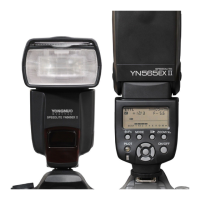
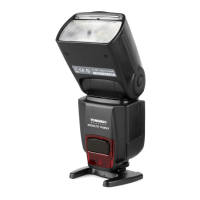
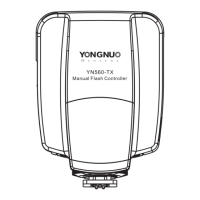



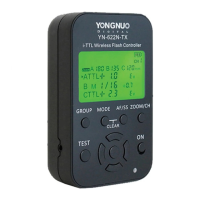
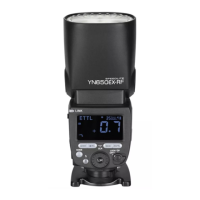
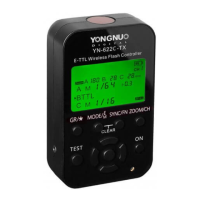
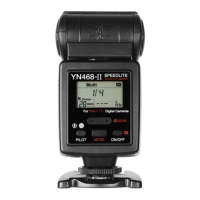
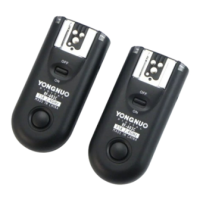
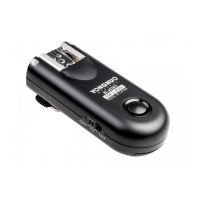
